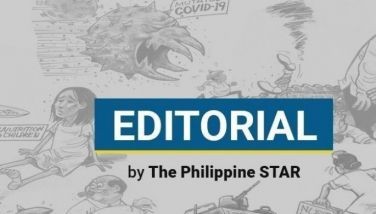Adolf Azcuna: A golden life

The book “Silver is my Gold” (Milflores Publishing, 2023) is an autobiography by Adolfo S. Azcuna which was launched only last Thursday. One feature that stands out is that the foreword written by Justice Antonio Carpio, the introduction written by Chief Justice Hilario Davide, the preamble written by Chief Justice Reynato Puno and the Exordium written by Chief Justice Artemio Panganiban are by themselves worth reading as independent essays.
In fact, if I had the space, I would devote part of it to a review of these extremely well-written essays.
When I was writing this book review, I was tempted to just quote short portions from these.
Carpio wrote: “The autobiography of Adolfo S. Azcuna is also a history of our country in the last eighty years or so.” Davide wrote: “All told, this ‘Silver is my Gold’ is the record of an authentic life of virtues from A-Z of a man who unselfishly dedicated his life in service to God, our country and our people, and humanity. May this SILVER which miraculously turned to GOLD inspire us all and generations to come.” Justice Puno wrote: “His pro-people decisions were forthright, no ifs and buts, no vacillations, no on one hand and no on the other hand. He proved to be predictable for he is first and foremost, a champion of our Constitution.”
Chief Justice Panganiban wrote a short summary of the major highlights of Azcuna’s life. Near the end, he writes: “His book is really a smorgasbord of life and law, history and laughter, sunshine and rain, information and entertainment, all rolled out in a never boring autobiography.”
The book is divided into three parts, which Azcuna titled Preparation (Paghahanda), Profession (Panawagan) and Presentation (Paghahandog).
The first part is devoted to his childhood days, to his college and law school days in Ateneo. The second part begins with his Bar exam, where he was one of the topnotchers, landing in 4th place. It includes his early judicial practice; his term as a delegate to the 1971 Constitutional Convention; life under martial law and his Malacañang years with president Corazon Aquino.
The most interesting stories in this part include his courtship of his wife Mariasun Aunario. They got married when he was 28 and she, 18. There is also his narration of his time as delegate to the 1971 Constitutional Convention. Azcuna’s narration of his time in Malacañang covered 58 pages out of the book’s 180 pages. But this was the most interesting part to me because this was the same time that I served in Malacañang as head of the Presidential Management Staff. This was the time also when I worked very closely with Adolf Azcuna. Although the book contains several behind-the-scene stories, I noticed that Adolf also did not elaborate nor mention other highly sensitive stories where he played a major role. I believe this is due to his strong sense of delicadeza. For those who know him well, perhaps they can ask his motivation for this.
Let me just give two examples. In a very short paragraph, Azcuna writes: “I next found out there were two rival groups of Cory supporters in government – the Council of Trent and the Cordon Sanitaire. I had friends in both. Joker was the leader of the Cordon, mostly lawyers. Trent was like a Curia that had many cardinals – most business leaders and finance experts.” Azcuna did not spend too much space elaborating on this, except to say: “The President then made sure that the rival factions worked efficiently together to achieve specific key result areas such as debt relief, farm gate price maintenance, infrastructure in the countryside, the nationwide building of newly designed school houses and badly needed halls of justice and the centerpiece of her presidency: poverty alleviation and agrarian reform.”
The second example is a favorite personal story he omitted. I remember an incident when a new book that impressed me I lent to Adolf, a book lover. After some time, I asked him to return it but he said he had given it to President Cory to read. I asked him if he told the President that the book came from me. And Adolf replied, “Of course not.”
But the book still contains many interesting behind-the-scenes stories that talk about some of the coups and the state visits to many countries that Adolf was a part of. The most memorable story of the visits is not the speech to the US Congress but an incident in a meeting between Cory Aquino and Deng Xiaoping who warned her: “It is Vietnam that is our enemy. Be very careful of Vietnam.” Years later when Adolf went to Vietnam, the president of Vietnam told him that the Philippines and Vietnam were friends and that China was the common enemy.
The last part of the book, Presentation, begins with his tenure in the Supreme Court, which had interesting discussions of Supreme Court decisions. Then it goes on to his appointment as head of the Philippine Judicial Academy.
At the end of the book, Adolf writes: “Speaking of our planet Earth, I render my closing thanks to God Almighty for the gifts of faith, hope and love showered upon us all in this fragile dot in space….”
This is a book that is a must-read for all Filipinos written by someone who truly loves the Philippines.
* * *
Email: [email protected]
- Latest
- Trending























